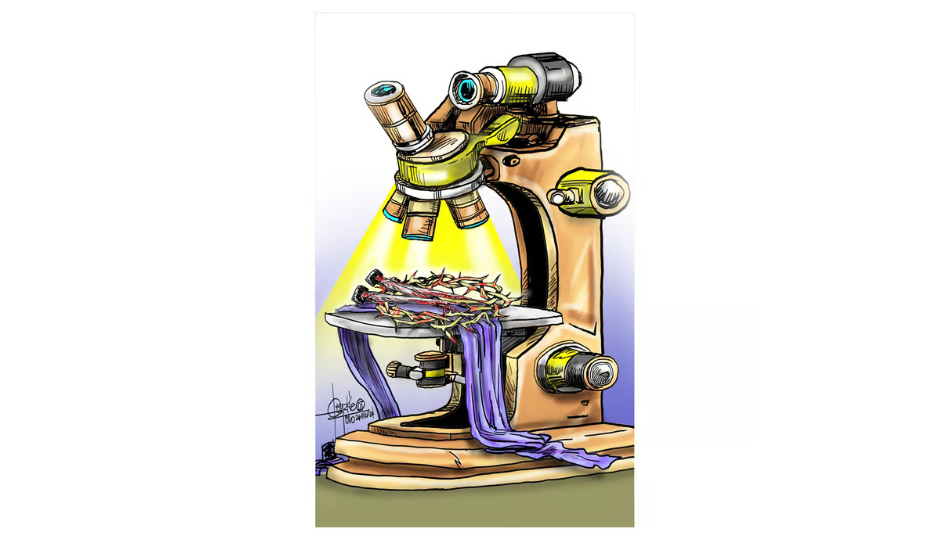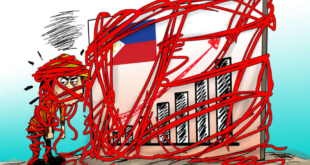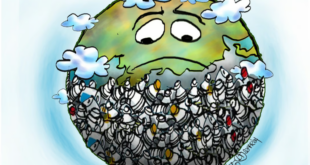Tolerance is important because while people may look oddly at Catholic practices, Catholics, inversely, may do the same when putting other religions and their practices under the microscope.

Holy Week is a time of great significance for Christians around the world, a period of somber introspection that ends with a joyful celebration. This week has a lively and distinctive quality in the Philippines, a country where Catholicism has been intricately woven into the fabric of society.
Throughout Holy Week, Filipino Catholics participate in a diverse range of rituals and activities. The Visita Iglesia, a pilgrimage wherein followers visit seven churches and meditate on the Stations of the Cross at each one, is one of the most well-known. This custom, which has its origins in Spanish colonial history, is a reflection of a strong prayerful life that longs for a closer understanding of Christ’s suffering.
Together, families and friends set out on this trip, deepening their spiritual ties and exchanging ideas on their religion. The visit, which frequently entails lengthy walks and public transit, takes on the meaning of penance, reflecting Christ’s own journey to Calvary.
The silent contemplation of Jesus’s sacrifice is made possible by another ritual: The worship at the Altar of Repose. These makeshift buildings, embellished with candles, flowers, and occasionally even miniature fountains, turn into refuges for introspection and prayer. The altar of repose is where the Communion hosts are dedicated on Maundy Thursday for use the following day during Mass emphasizing Jesus Christ’s Last Supper.
These customs demonstrate the Filipino Catholic’s preference for a more visceral and tactile understanding of religion. The altars serve as potent reminders of the beauty and tranquility amidst the sadness of Christ’s crucifixion since they are frequently exquisitely decorated by the local communities. This emphasis on faith’s aesthetics is a reflection of Filipino culture’s innate love of creativity and visual expression.
But not every Holy Week custom in the Philippines is followed by everyone. For many years, self-flagellation, or “panata,” has been controversial. Because of possible health dangers, the Church frowns on it, even though some people believe it paves the way for the forgiveness of sins.
The practice’s roots date back to pre-colonial beliefs, and may have been influenced by Spanish flagellant brotherhoods. Nonetheless, the Catholic Church places more emphasis on the value of introspection and confession than on intentional self-harm. It has been supportive of substitutes to make penance, such as charitable deeds or volunteer work, as these are more in line with Christ’s teachings.
In a similar vein, the crucifixion reenactment, complete with actual nails being driven into those who essay the role of Christ, regularly comes under fire. Although the goal is to empathize fully with Christ’s suffering, the chance of severe harm is always present. This practice, which is mostly limited to particular areas like Pampanga, probably started out as a way to have a more emotional religious experience.
Likewise, there are frequent objections to the Catholics’ use of statues and icons, with the magnificent processions staged during Holy Week in the Philippines being a clear indication of this. For Filipinos, the icons serve to channel their prayer and meditation, notwithstanding the criticism that these practices amount to idolatry.
Devotion centers around the exquisitely crafted statues of the Dolorosa, or Virgin Mary, and the Santo Niño, or child Jesus. They serve as links to the divine, embodied images of Christ and the Virgin Mary that arouse feelings of devotion and encourage prayer, rather than being viewed as deities in and of themselves.
It is true that outsiders may find Filipino Holy Week customs peculiar. But looking at a religion only on the basis of its external manifestations compromises the sincerity and profundity of its followers’ beliefs. Filipino Catholicism has incorporated regional beliefs and practices, resulting in a distinctive fusion of culture and religion.
In the end, religious tolerance is important because as non-Catholics may look oddly at Catholic practices, Catholics, inversely, may do the same when putting other religions and their practices under the microscope. To each his own, and religion is something that is between a man and his faith in God, his God.
*****
Credit belongs to: tribune.net.ph
 Atin Ito First Filipino Community Newspaper in Ontario
Atin Ito First Filipino Community Newspaper in Ontario






